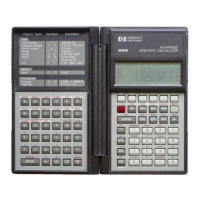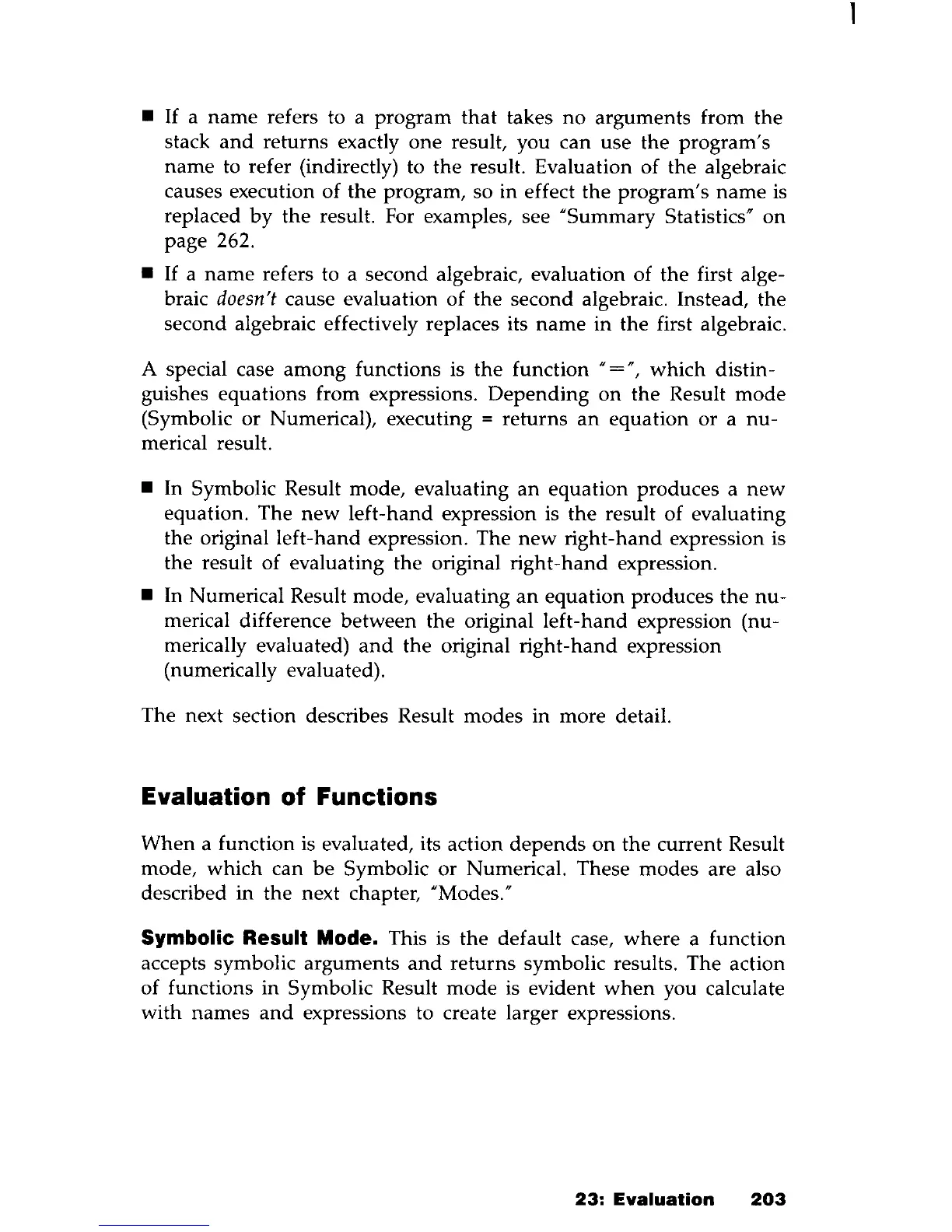•
If
a
name
refers to a program
that
takes
no
arguments from the
stack
and
returns exactly one result, you can use the program's
name
to refer (indirectly) to
the
result. Evaluation of
the
algebraic
causes execution of
the
program, so in effect the program's
name
is
replaced
by
the
result. For examples, see HSummary Statistics
H
on
page 262.
•
If
a
name
refers to a second algebraic, evaluation of the first alge-
braic
doesn't cause evaluation of
the
second algebraic. Instead, the
second algebraic effectively replaces its
name
in the first algebraic.
A special case
among
functions is
the
function
U=H,
which
distin-
guishes equations from expressions.
Depending
on
the Result
mode
(Symbolic or Numerical), executing = returns
an
equation or a
nu-
merical result.
•
In
Symbolic Result mode, evaluating
an
equation produces a
new
equation. The
new
left-hand
expression is
the
result of evaluating
the original
left-hand
expression. The
new
right-hand
expression is
the result of evaluating the original
right-hand
expression.
•
In
Numerical Result mode, evaluating
an
equation produces
the
nu-
merical difference between the original
left-hand
expression (nu-
merically evaluated)
and
the original
right-hand
expression
(numerically evaluated).
The next section describes Result modes in more detail.
Evaluation of Functions
When
a function is evaluated, its action
depends
on
the current Result
mode,
which
can
be
Symbolic or Numerical. These modes are also
described in
the
next chapter,
HModes./I
Symbolic Result Mode. This is the default case,
where
a function
accepts symbolic arguments
and
returns
symbolic results. The action
of functions in Symbolic Result
mode
is evident
when
you calculate
with
names
and
expressions to create larger expressions.
23:
Evaluation
203

